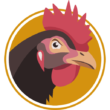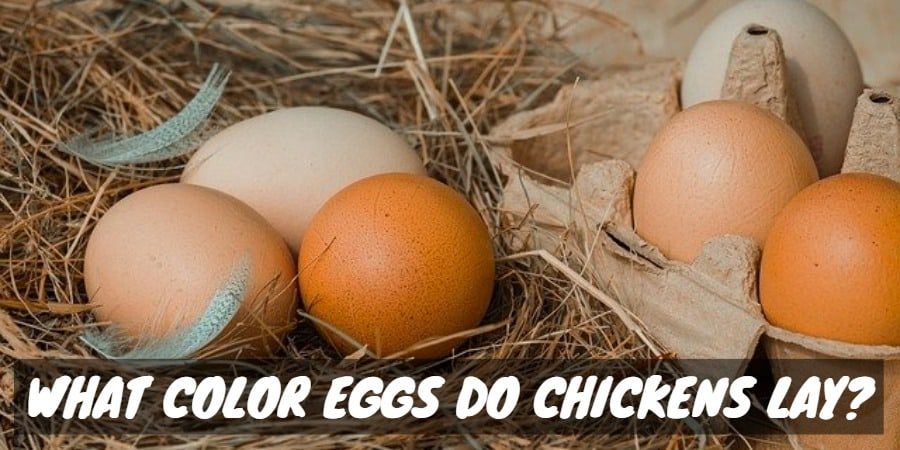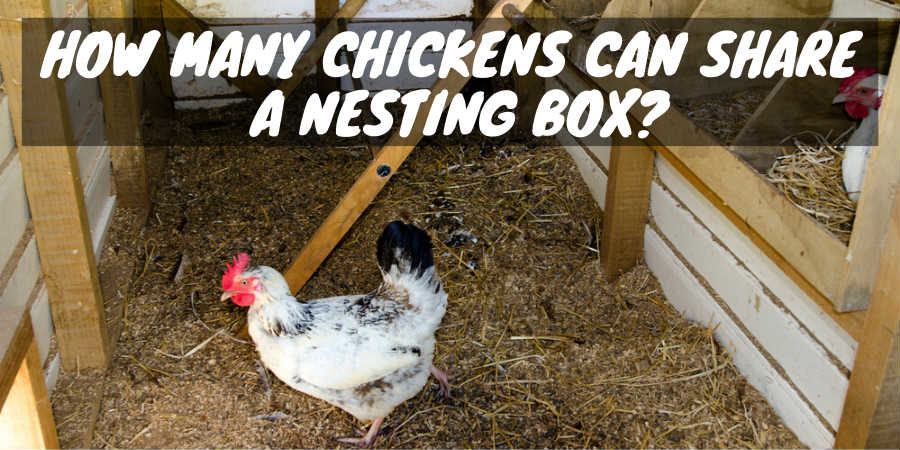This question can seem quite complicated to the novice in chicken biology but is, in fact, simple when compared to others fowls (birds). There are a series of steps that take place before and after the hen is ready for reproduction. It is vital to comprehend that only hens can lay eggs and roosters are able to fertilize the egg therefore procreating.
Without the rooster’s ability to fertilize, hens will continue to produce unfertilized eggs in what we’re all familiar with today. Keep in mind that eggs are either fertilized or unfertilized, meaning they’re not a “chicken’s period.” Chickens don’t have uteri, so they don’t have endometria and therefore do not menstruate. They do have ovaries though, and that’s where the egg is formed, making for either a baby chick or a delicious snack.

Before we jump into the steps taken for chicken’s to reproduce it is beneficial for me to lay out a few helpful insights when questioning their biology.
If you prefer video, please feel free to jump to the end of the article for a YouTube video that explains the process.
Asymmetrical Gonads
Gonads, being an organ that produces gametes, are usually paired in two. Males typically have two testicles while females hold two ovaries. Hens, on the other hand, only have one functional ovary; in fact, most birds have this lopsided anatomy. This is most likely because of how flying creatures should be light and reduced so as to fly, so they just create one of their gonads.
Roosters are a unique kind of fowl due to their normal testes when compared to other birds. When compared to other fowls, rooster’s right testicle is usually smaller than their left. This is due to a variety of factors, but it’s mainly because of their ground-bound flight when compared to other birds.
[amazon bestseller=”chickens feed”]
No Copulatory Organs
Unlike us humans, most bird species don’t have external genitalia, including hens and roosters. This factor simplifies reproduction, allowing for both spouses to produce offspring using an external orifice called a cloaca. Once the rooster mounts the hen, the cloacae then release fluid into the female reproductive tract, making for no internal penetration. Ironically, this act is named a “cloacal kiss.”
It is also notable mention that both genders use their cloacae for defecation – but that doesn’t mean the egg goes out the same way. To clarify hat the egg does not touch the feces, the uterus has a mechanism which allows it to turn inside out, ensuring that no feces makes contact via the egg. Hopefully, this can put people at rest when ordering an omelet.
Twins to Die For
A common question asked is whether or not a hen can lay an egg containing two chickens. Technically, yes, but realistically, no. With the intervention a skilled professional, you might be able to, though.
Legends proclaim that a dual-yolked egg is deemed to be unlucky, intending that an approaching death in your family will occur. Although this is only a fairytale, it does have some truth behind it. Apparently, if there is more than one chick inside the egg at birth, they encounter a problem. A chicken, when ready, will try to free themselves from pecking at an airspace above their head. Under normal circumstances, this method works. But, when presented with two chickens inside an egg, there is simply not enough room. The two chicks will either fight to the death or literally die from suffocation due to the crowdedness.
For this phenomenon to happen, there is a sequence of results that take place. There are five regions of a hen’s oviduct with each serving its own purpose in the creation of a follicle (or “pre-egg”). The first being the funnel of the oviduct, or in other words, the infundibulum. Its main duty is to “catch” the egg after leaving the ovary. It’s good to know that this is where the sperm resides after reproduction occurs. Fertilization can and will happen in this region.

The second region is the magnum, the longest of the five. Its job is to merely hold the egg for about three hours while layering the yolk with albumen, a protein vital for the yolk’s survivability.
The third region is the isthmus, a thin part of the oviduct leading into the uterus. This region is perhaps the most crucial in its development for the yolk or baby chick. Water is inserted into the albumen, giving it its white color that surrounds the yolk. The inner and outer shell membranes are also stored, giving it more support throughout the net regions.
The fourth region is the shell gland or uterus. The egg spends the majority of its time in this region, equating to about 19 hours. The formation of the shell takes place here, where hard calcium is added. This is also where a pigment would be embedded onto the shell, determining its color.
The last region is the vagina and is responsible for the input/output for either eggs or semen fluid.
Whether or not the egg will produce two baby chicks all depends on the ovary’s mechanism. By mere chance, sometimes the ovary will produce two yelks at the same time. This happens mainly in the first and third region but can sometimes occur during the hardening of the shell in region four.
With the conclusion to all of these vital acumens, you’ll now be able to comprehend how chickens reproduce on an anatomical level, as well as having an understanding of their reproductive nature. We’ll now be covering exactly how a hen and rooster interact as well as their cycle in regards to procreation.
The Mating Dance
This dance is performed by a rooster striving to get the attention of a nearby hen. The rooster starts off by slowly circling around the hen. He will then scuttle his feet while flipping his wings down. This shows the hen a type of courtship and proposition. If the hen obliges, she will squat on the ground and continue the gesture to mate.
Once this procedure follows through, the next events correspond with the information provided above. The rooster mounts himself on the hen while grabbing the top of her head near her comb. After this, he will then stand on her back while lowering his cloaca. Meanwhile, the hen rearranges her lower torso and the chicken’s brush cloaca. The rooster will then insert his semen into the hen’s reproductive tract, with intent to fertilize the eggs.
Egg Fertilization

After the chickens have mated, egg fertilization is most likely to occur. As with most living creatures, semen samples may not be sufficient at times, resulting in unfertilized eggs even after mating.
Once the semen has entered the hen’s reproductive tract, the real magic begins. The ovum, once activated, will be released from hen’s ovary signaling a need for movement. The infundbulum can then be transferred by certain folds, collecting the sperm so that it can reach the ovum. After countless sperm contacts the germinal disc, one unites with the ovum resulting in a successful fertilization. Unlike mammals, bird have a fertilization that occurs in about a day’s time. This aids in its primal development. Cell division then starts about three hours in.
Egg Development
It is important to list the three crucial embryonic membrane functions that play a part in a chicken’s egg development. The yolk sac, amnion, and allantois all provide protection for the shell as well as providing nutrition, respiration, and excretion.
The yolk sac provides the egg with food material, aiding in the embryo. The amnion is a thin, membranous, fluid-filled sac that surrounds the embryo and provides protection. This function is crucial in the baby chick’s production. The allantois is an organ in the embryo of birds that develops into part of the umbilical cord and unites with the chorion, forming the placenta. Keep in mind that these are temporary organs and once the baby chick is hatched these organs collapse.
The egg in whole is a complex reproductive cell with many layers of divisions. Firstly, the latebra starts to form, making a yellow-like substance we’re all familiar with. After this simple step, the nucleus of pander and blastoderm begin to merge, which surrounds and protects the germ cell and yolk from oxidation. The vitelline membrane then proceeds to form, which is virtually fat mixed together with all the other compounds. The albumen is then chemically induced, which makes an elastic-like substance. It is also a shock-absorbing, semi-solid material with high water content, providing excellent resistance for the egg shell to form. Finally, two shell membranes and the shell itself are formed, giving protection to both the yolk and albumen. The shell additionally accommodates a trade of gases and fills in as a strategy for monitoring the sustenance and water supply encased inside the shell to assist the creating developing life.
After this complex process, the egg is then ready to be incubated, or in other words, prepared for hatching.
The Incubation Process – a Procedure Either You or the Hen Can Take

Once a mother hen lays her eggs, primal instincts in. She will constantly watch over them while adjusting every other hour while rarely leaving the nest for more than a few minutes. The hen knows that if she slightly neglects the eggs, her babies will never hatch.
Nowadays, modern hens are less effective when it comes to incubating, putting the lives of their baby chicks at constant risk. This can either be due to genetics or culture, but one thing is for sure: it is safer for you to incubate the eggs yourselves. If you’re planning on incubating the eggs, there are some crucial facts you may want to know. I’ll be providing you with a few insights into how hens correctly hatch their eggs, settling for optimal results.
Location and Readying of the Incubator
Whether you’ll be setting up your own incubator or allowing the hen to do her motherly job, it is important to understand the region in which eggs are best suited.
To begin, you want to make sure that the temperature of the room is somewhere close between 70o and 75o F (21 and 24 C). Be certain to also avoid direct sun contact on the embryos as this can completely destroy all of them. If you’re using an incubator, please be sure to insert a forty-watt bulb as this is good practice to ensure maximum results. This being said, light is essential in the growth of an embryo, but too much of it can be fatal.
[amazon bestseller=”chicken incubators”]
Humidity, Temperature, and Ventilation
These three factors play a huge part in the incubation process. If one is in transgression, the other two will follow. If your hen is incubating, make sure that these factors are in line; vice-versa if you’re providing the incubator.
To recall, humidity is the quantity representing the amount of water vapor in the atmosphere, or atmospheric moisture. You might be thinking that this factor has little effect on the egg’s progression, but it’s totally the opposite. Throughout the days of incubation, nature drys out the egg to some extent, making for a total of 11 percent water loss when compared to its original weight. When using an incubator, add water to it to avoid excessive moisture loss. If the hen is incubating, she’ll naturally produce sufficient moisture from her cloacae.
The ideal moisture level is about 50 to 55 percent relative to humidity (28 – 31 C). Redundant amounts of drying in view of low moistness will make the baby chick adhere to the shell and neglect to endure. Some variety above or underneath the perfect dimension normally won’t influence hatchability definitely.
[amazon bestseller=”humidity monitor”]
Temperature
The temperature of the egg (not location or room temperature) can vary from 99o to 103o F. (37 – 39 C) with no harmful effects. Overheating is significantly more hazardous than underheating, which will normally result in irregular incipient organisms, accelerate maturation, and lower hatchability.
Ventilation
This factor (ventilation) is perhaps the most vital in terms of inconstant behavior. Hens will usually stay near their eggs at all times, ensuring they are well-kept and ventilated. When using an incubator, though, this can be quite tricky to manage. Oxygen enters the egg through the shell while and carbon dioxide escapes interchangeably, and this all happens while the embryo is in development. Without proper airflow, inadequate oxygen will prompt the egg with serious aftereffects, specifically deformation. Gradually increase the flow of air throughout time-period of incubation.
Turning the Eggs – Most Important Step
Mother hens are indistinctly aware of when to turn their eggs. Call it “mother’s sense,” but these creatures are prone to know the state of their eggs. Without proper turning, the baby chick will not be able to escape the shell when they’re ready, leaving them to suffocate to death. Turning helps prevent the embryo from sticking to the shell membranes, which will eventually cease the production of the egg. If you’re using an incubator, it is good practice to turn the eggs at least three times a day, preferably first thing in the morning. Do not turn the eggs on the 17th day of incubation as this is when the chick is in critical production. Any outside influence could result in the chick’s death – oddly enough, the hen knows this as well.
Final Stages of Incubation

On the 17th day, chicks will start to develop into living beings. Keep in mind that it takes 21 days for an egg to hatch, and sometimes shorter hen using an incubator machine. On the 19th day, chicks will start to pip at the top of the shell, which sometimes occurs on the 18th. On the 21st day, all chicks should be out of their egg naturally. If there are any chicks left behind on the 22nd day and beyond, it usually indicates an unhealthy chick.
Hatched Chicks
Once the chicks remove themselves from their egg, they’ll either reside with their mother where they’ll be fed and nourished, or you’ll clean them up and place them in a quarter with a temperature of about 95 F (or ~35 C). After about ten hours, provide them with fresh water and feed and keep watch over them to see if they’re any symptoms of illness.





Thank you I got a lot out of your article